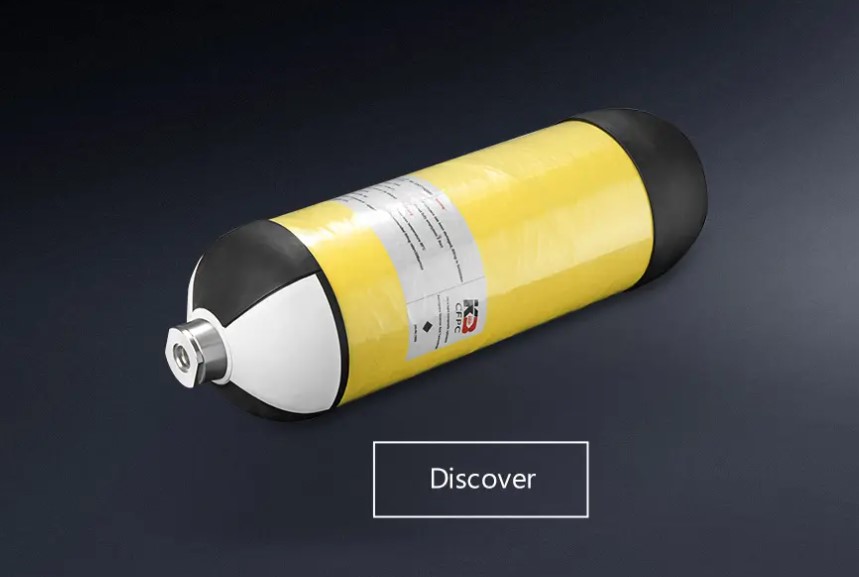Introduction
High-pressure breathing systems such as Self-Contained Breathing Apparatus (SCBA), SCUBA gear, and emergency escape devices are vital tools in hazardous environments like firefighting, search and rescue, and underwater missions. The heart of these systems is the pressurized gas cylinder that stores breathable air. Traditionally, steel tanks were the standard. However, carbon fiber composite cylinders have increasingly become the preferred choice due to their performance, safety, and practical benefits. This article explores the advantages of carbon fiber tanks over traditional steel ones and outlines the best practices for daily storage and maintenance to ensure their long-term functionality.
Key Benefits of Carbon Fiber Tanks
1. Lightweight and Easy to Handle
Carbon fiber tanks are significantly lighter than steel tanks. This weight reduction is crucial for users such as firefighters or rescue personnel who carry the equipment in intense conditions. Less weight means reduced physical fatigue, better mobility, and more time to perform critical tasks.
2. Higher Pressure Capacity, More Air Storage
Carbon fiber composite tanks are designed to hold air at higher pressures, typically 3000 to 4500 psi. This translates to more breathable air in a smaller, lighter container, which can be life-saving in confined or remote environments. Traditional steel tanks often operate at lower pressures, limiting the amount of air stored.
3. Corrosion Resistance
Steel is susceptible to corrosion, especially in wet or saline environments, such as in firefighting or diving. Carbon fiber composite cylinders, with their non-metallic outer layers and corrosion-resistant linings, are less likely to degrade due to environmental exposure, extending their service life and reliability.
4. Impact Resistance and Safety
Carbon fiber cylinders are constructed to absorb impact better than steel. The composite layers can distribute force more effectively, minimizing the risk of sudden rupture. This makes them safer for unpredictable and harsh field conditions.
5. Longer Service Life and Cost Efficiency
While the upfront cost of carbon fiber cylinders is higher than that of steel cylinders, their longer service life and lower maintenance needs often result in better long-term value. They are also less prone to damage from rust and physical wear.
Applications in Various Use Cases
- Firefighting SCBA Systems: In high-temperature, low-visibility environments, reduced cylinder weight is a major benefit. It allows firefighters to move more freely and for longer durations.
- Wild Rescue and Emergency Escape: During forest fires or disaster evacuations, portability and speed matter. Carbon fiber tanks make it easier for rescuers to cover ground quickly.
- SCUBA Diving: Lighter tanks reduce diving fatigue and make surface handling easier. The corrosion resistance is also ideal for saltwater conditions.
- Industrial Emergency Kits: Compact, high-capacity tanks are useful in confined spaces or chemical plants for short-term air supply during an emergency.
Daily Storage and Maintenance Tips
To keep carbon fiber composite cylinders in optimal condition, users must follow proper care and inspection routines. Here are key steps:
1. Storage Environment
- Store cylinders in a cool, dry, and clean place.
- Keep away from direct sunlight or high heat sources to prevent material degradation.
- Avoid areas with chemical exposure or high humidity.
2. Pressure Management
- Do not leave cylinders fully pressurized when not in use for long periods. Keep them at a safe intermediate pressure (e.g., around 300-500 psi) to reduce stress on the material.
- Never store the tank empty, as moisture may enter and cause internal corrosion in the metal liner.
3. Regular Visual Inspection
- Check the outer surface for cracks, deep scratches, or delamination.
- Inspect valve threads and protective caps to ensure they are clean and undamaged.
4. Hydrostatic Testing and Recertification
- Follow the testing cycle mandated by your country’s regulations (typically every 3 to 5 years).
- Only allow trained and certified personnel to perform hydrostatic tests.
5. Avoid Sharp Impacts
- Even though carbon fiber tanks are strong, avoid dropping or striking them on hard surfaces.
- Use rubber boots or padded cradles to protect the base during transport and storage.
6. Valve and O-Ring Maintenance
- Clean and lubricate the valve as recommended by the manufacturer.
- Replace O-rings and seals as part of regular upkeep.
Summary and Conclusion
Carbon fiber composite cylinders offer clear advantages over traditional steel tanks in critical use cases such as firefighting, rescue missions, emergency escapes, and underwater operations. Their lightweight structure, high-pressure capacity, and resistance to corrosion and impact make them a superior choice in demanding environments. However, to ensure safety and reliability, proper storage, handling, and regular maintenance are essential. With the right practices, carbon fiber tanks not only enhance performance in the field but also contribute to the safety and endurance of life-saving equipment.
Post time: Apr-10-2025


